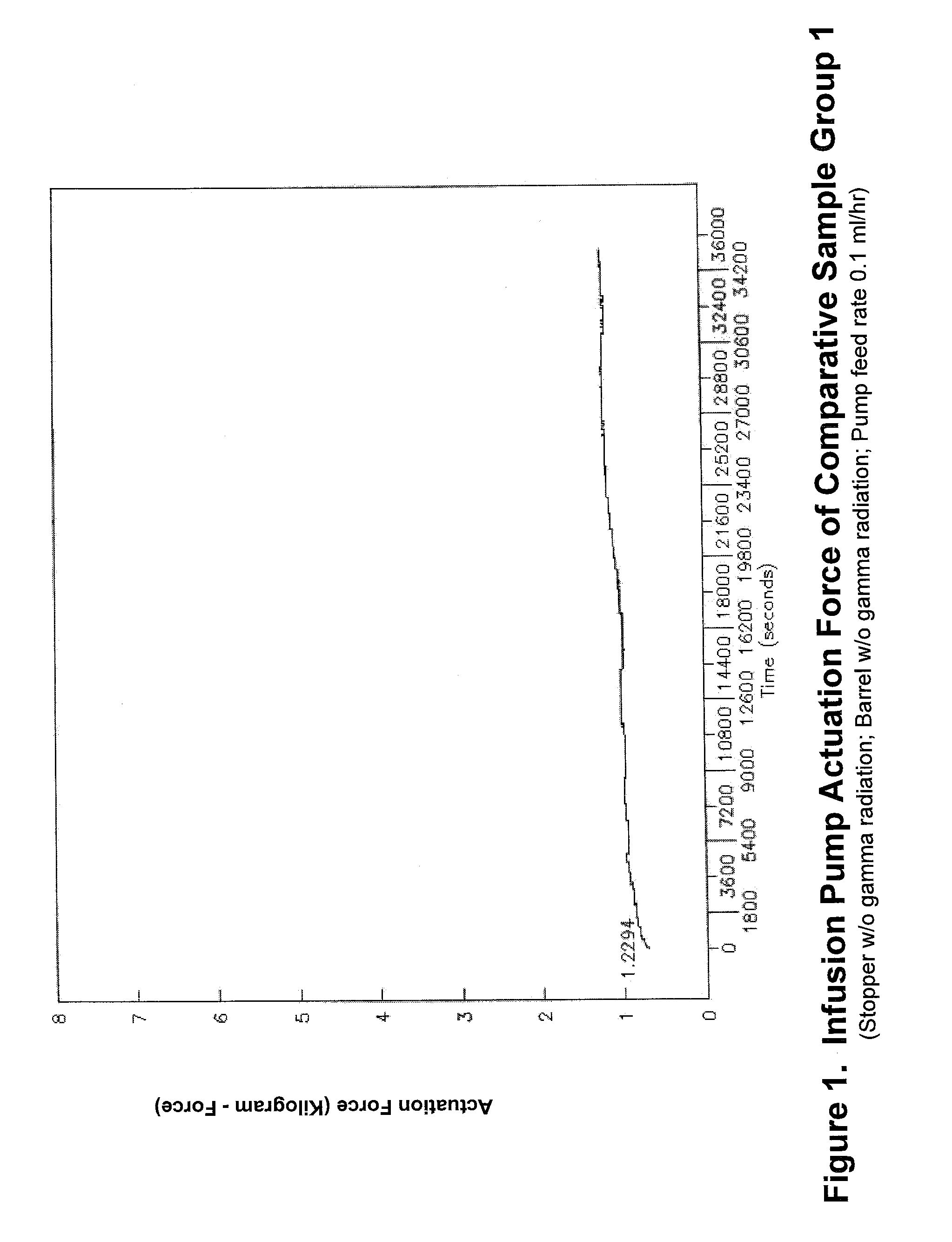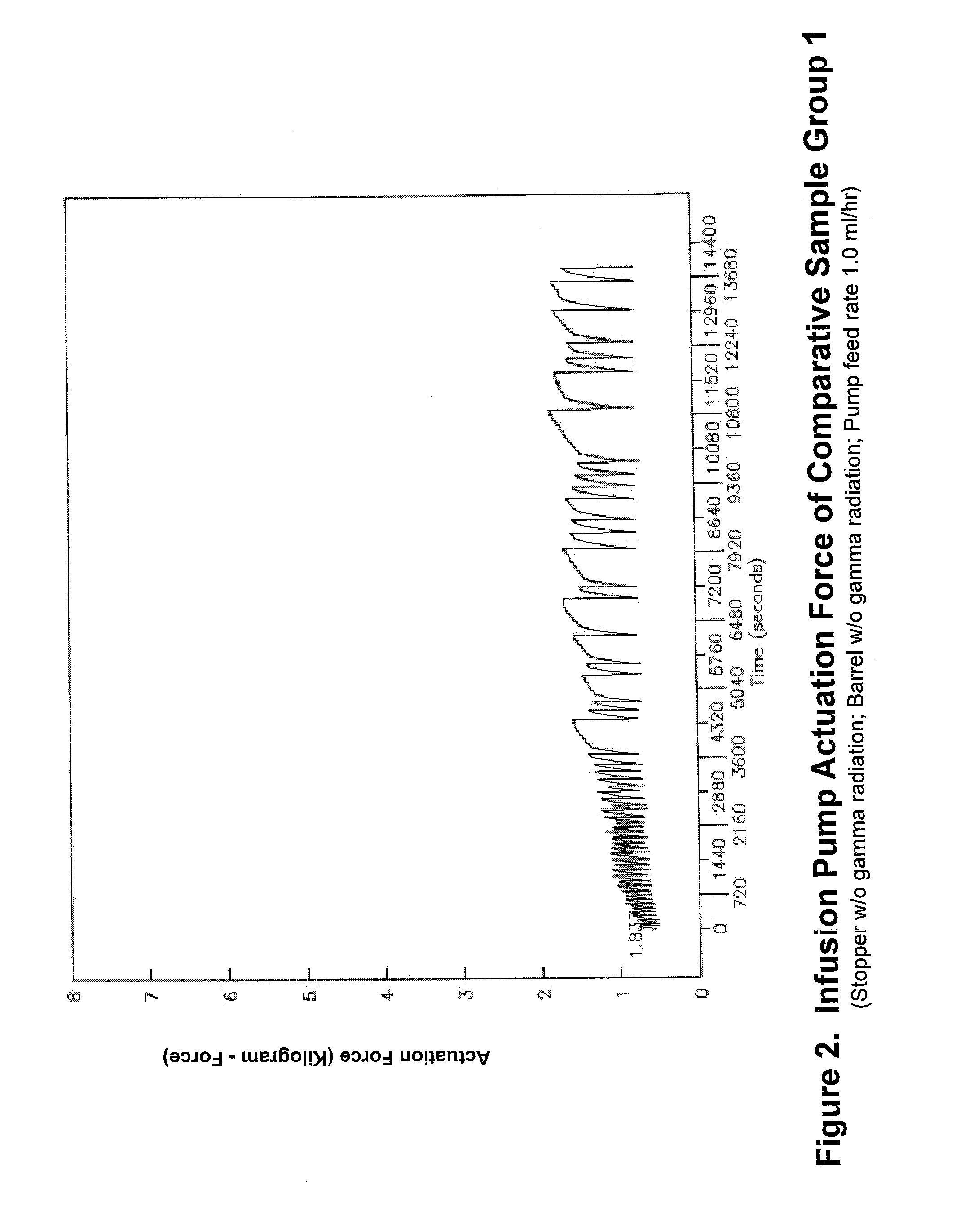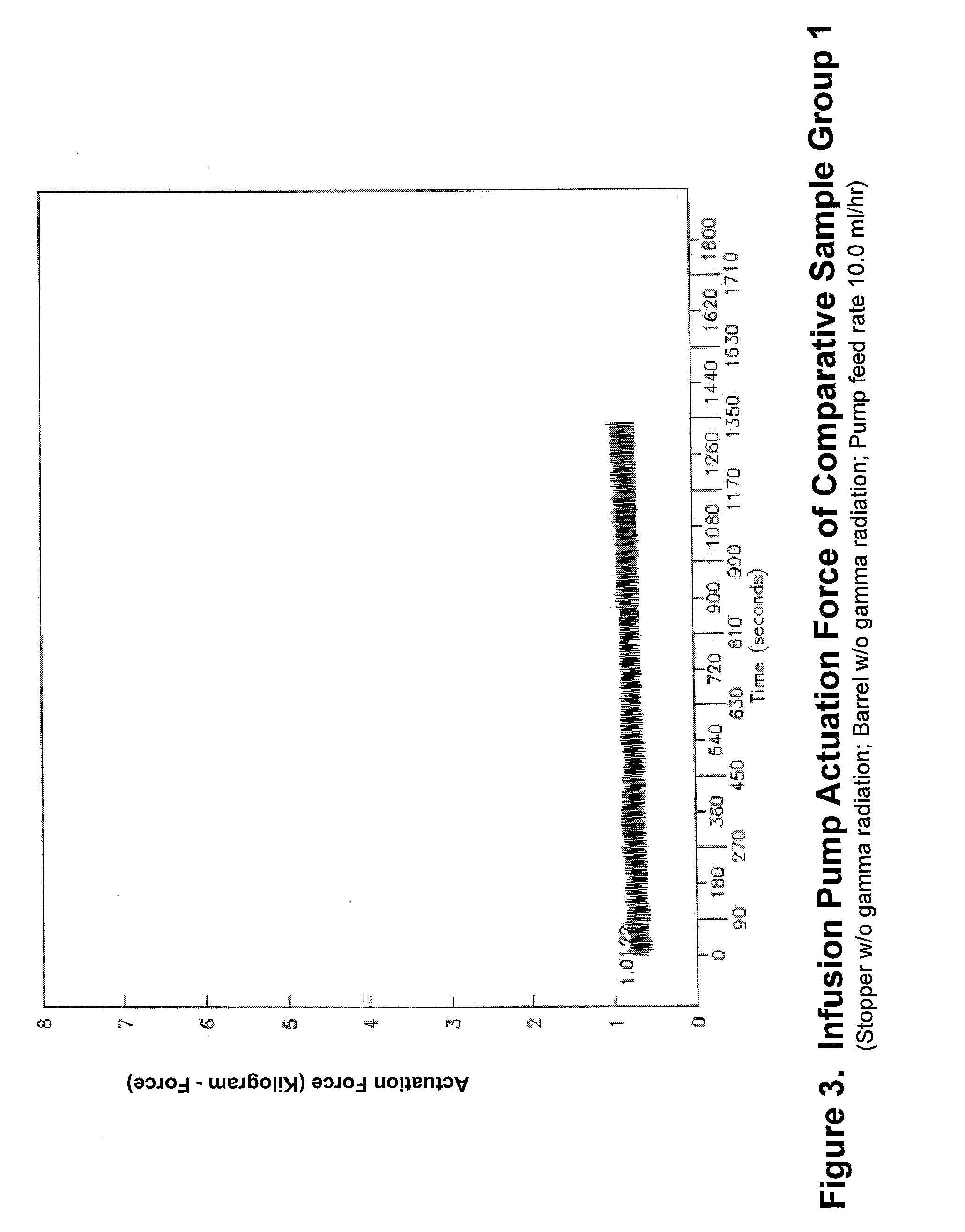Medical Components Having Coated Surfaces Exhibiting Low Friction and Methods of Reducing Sticktion
a technology of coating surface and adhesive, applied in the direction of coating, intravenous device, medical syringe, etc., can solve the problems of dispensing devices, requiring slow and controlled initiation and maintenance of certain devices, and requiring breakout and breakloose forces to be particularly troublesome, so as to and reduce the sustaining force
- Summary
- Abstract
- Description
- Claims
- Application Information
AI Technical Summary
Benefits of technology
Problems solved by technology
Method used
Image
Examples
example
[0089]Syringe barrels for 10 and 50 ml syringes were coated with coating compositions according to the present invention. The syringe barrels were formed from a cyclic polyolefin. The interior surface of each barrel was coated with DC 360 polydimethylsiloxane having a viscosity of 12,500 cst, available from Dow Corning. Helvoet FM457 (Butyl-1) and FM460 (Butyl-2) butyl rubber and Kokoku SBR syringe stoppers were coated with a conventional polydimethylsiloxane having a viscosity of 100,000 cst or 300,000 cst. The syringe barrels and stoppers were irradiated using gamma radiation at dosages specified in Table 1.
[0090]Each syringe was assembled and filled with 10 or 50 ml of deionized water and autoclaved at 124° C. for 30 minutes.
[0091]Breakout forces, breakloose forces, and sustaining forces may be conveniently measured on a universal mechanical tester or on a testing machine of the type having a constant rate of cross-head movement, as described in detail below. The syringe assembli...
PUM
| Property | Measurement | Unit |
|---|---|---|
| molecular weights | aaaaa | aaaaa |
| viscosity | aaaaa | aaaaa |
| molecular weight | aaaaa | aaaaa |
Abstract
Description
Claims
Application Information
 Login to View More
Login to View More - R&D
- Intellectual Property
- Life Sciences
- Materials
- Tech Scout
- Unparalleled Data Quality
- Higher Quality Content
- 60% Fewer Hallucinations
Browse by: Latest US Patents, China's latest patents, Technical Efficacy Thesaurus, Application Domain, Technology Topic, Popular Technical Reports.
© 2025 PatSnap. All rights reserved.Legal|Privacy policy|Modern Slavery Act Transparency Statement|Sitemap|About US| Contact US: help@patsnap.com



